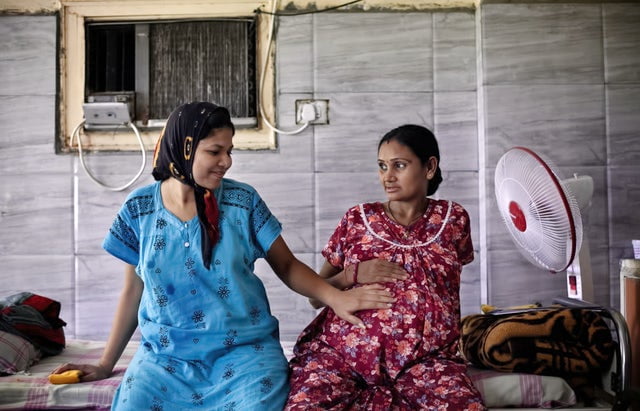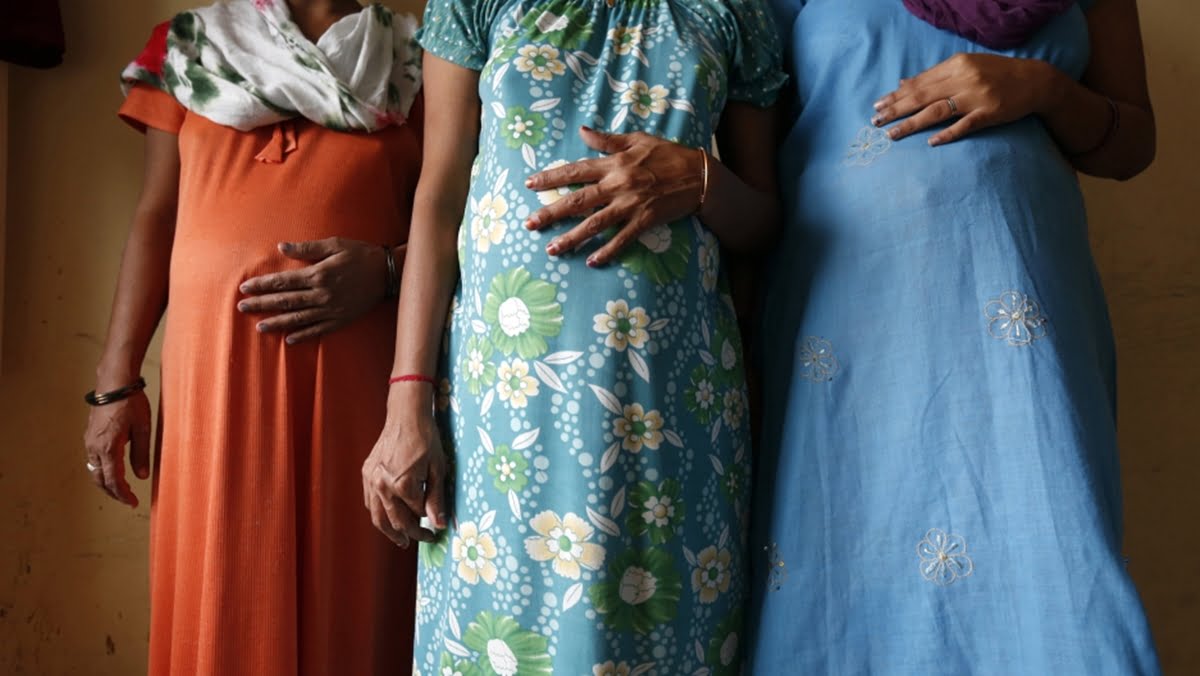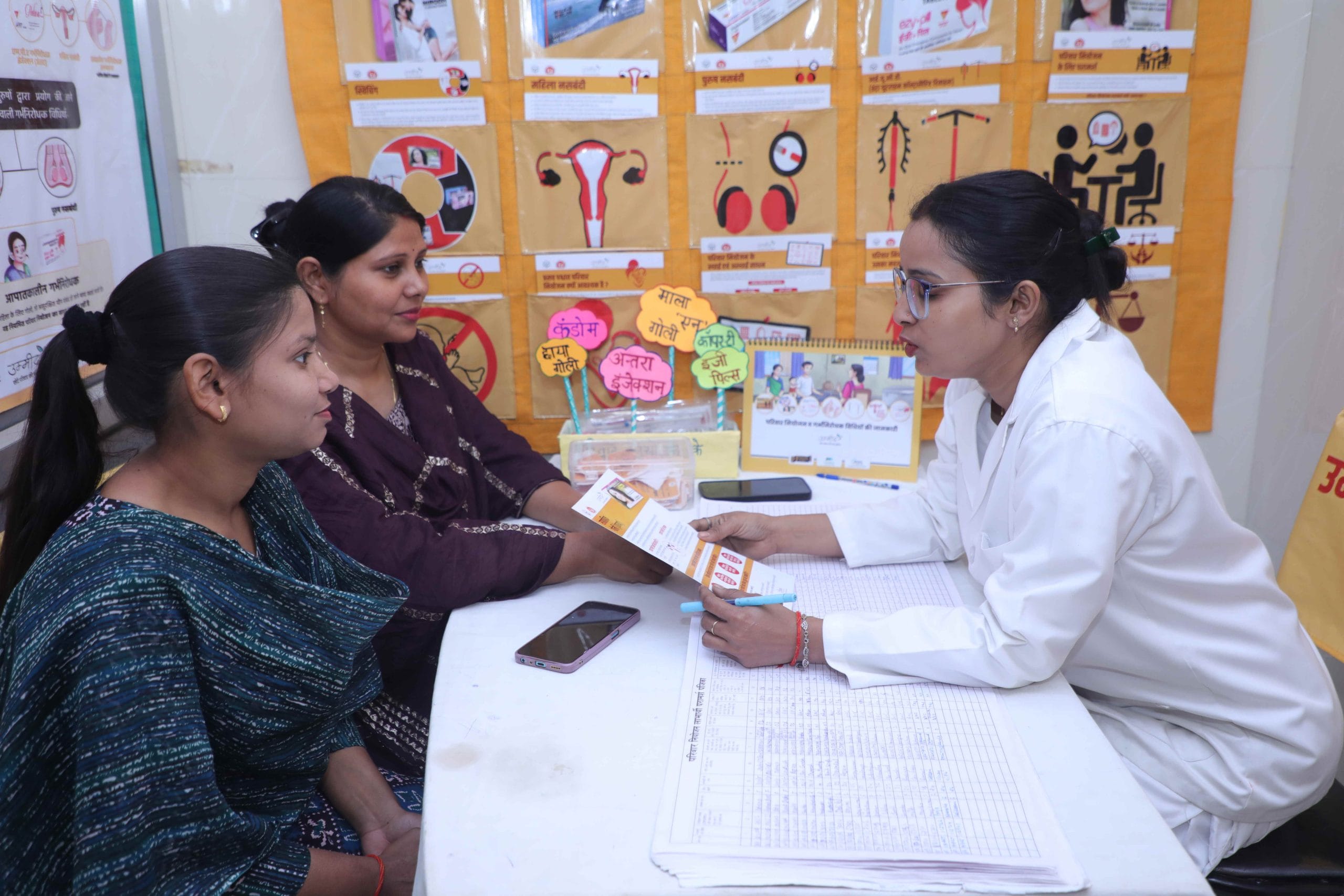The term reproductive justice is often used interchangeably with reproductive rights. However, the two are critically different, both in philosophy and in practice. Reproductive rights are centred around the legal right to access reproductive healthcare related information and services, including family planning, abortion, maternal and other reproductive health services. Access and utilisation of this information and services are influenced by numerous cross-cutting and intersectional socio-political, economic and identity inequalities. And this is where reproductive justice becomes key.
Developed out of the women of colour feminist/reproductive rights movement in the United States, reproductive justice was first defined as “the human right to maintain personal bodily autonomy, have children, not have children, and parent these children in safe and sustainable communities.”
Developed out of the women of colour feminist/reproductive rights movement in the United States, reproductive justice was first defined as “the human right to maintain personal bodily autonomy, have children, not have children, and parent these children in safe and sustainable communities.” Reproductive justice emerged as its own movement and discourse because women outside the mainstream reproductive rights movement acknowledged that there are intersecting factors such as race, caste, religion, age, sexuality, disability, geographical location and class that impact vulnerable women differently. A discourse around reproductive rights by ignoring these factors, ignored ALL women’s right to choose.
Also read: 7 Toxic Practices Around Reproductive Health And How We Can Stop Them
Take, for instance, abortion. All women in India have the same right to abortion according to the Medical Termination of Pregnancy (MTP) Bill 2020; however, not every woman has the same access or opportunity to exercise that freedom to choose. Reproductive justice focuses, therefore, on abortion access rather than abortion rights, asserting that the legal right to abortion is meaningless for women who cannot access it due to the unavailability of a qualified provider or facility, cost, distance to the nearest provider, provider bias or other obstacles. Similarly, for women who are unable to access the contraceptive of their choice due to supply stock outs, limited methods in the basket of choice, lack of bodily autonomy or lack of access to health services, are then unable to fully realise their reproductive rights. Reproductive justice recognises, therefore, that women are often unable to partake and do not have agency in their own bodily autonomy and hence, require remedies that attempt structural change and ensure that their rights are realised in practice.
In 2005, the Asian Communities for Reproductive Justice defined three overarching frameworks that focus on women’s reproductive needs:
- Reproductive health – addressing inequalities in health services
- Reproductive rights – addressed legal issues and emphasised the protection of women’s rights to reproductive health services
- Reproductive justice – encompassing both access and rights, while also addressing social, political and economic systemic discrimination and inequalities that affect women’s ability to control their reproductive lives.
Reproductive justice places vulnerable groups at the centre of the discourse. By focusing on the needs of the vulnerable and marginalised, rather than the majority, reproductive justice seeks to ensure their self-determination over their reproductive lives. The reproductive lens therefore also encapsulates a far wider range of issues, including but not limited to, maternal health, abortion, contraception, sex determination, comprehensive sexuality education, violence against women and girls, poverty, environmental justice, casteism, racism, education, LGBTQIA+ rights, disability — all within a human rights framework.
Also read: A Young Woman’s Toolkit For Advocacy On Sexual & Reproductive Health And Rights & Mental Health
In India, the state’s approach to reproductive rights has historically focused on population numbers rather than on enhancing women’s autonomy and agency. While our family planning programme was adopted in the 1950s, its overemphasis on meeting targets has shifted focus away from a social justice approach. According to the National Family Health Survey (NFHS-4) 2015-16, nearly half (47 percent) of Indian women do not use any contraceptives. As high as 13% of currently married women had an unmet need for family planning, which implies that they want to access family planning services but are unable to do so for a variety of reasons. Those who do access family planning have inadequate choices and unequal power relations, accompanied by fragmented knowledge, which further inhibits true contraceptive choice. In India this is manifested in the over-emphasis on female sterilisation of all the modern methods of family planning available in the public health system. As per the NFHS-4 survey, 36% of women aged 15-49 have undergone sterilisation.
Burdened further by the sole responsibility of family planning, these women resort to unsafe abortions often as a proxy for contraception putting themselves and their health at risk. A reproductive justice approach would focus not only on the use of contraceptives or high levels of abortion but rather also address the structural inequities – lack of agency, access, basket of contraceptive choice, provider bias, violence etc. – which prevent millions of women from accessing the family planning of their choice. Such an approach focuses on better and healthier lives for women, their families and communities.
In India, as is globally, the impacts of the pandemic have been exacerbated for girls, women and the marginalised sections. The COVID-19 pandemic has laid bare existing inequalities and magnified the harmful impacts of patriarchy and gender inequality. Even prior to the pandemic, regressive social norms and the lack of freedom amongst women to exercise their reproductive autonomy limited their access to family planning and sexual and reproductive health services. For vulnerable women the situation has become even worse.

It is critical to build awareness on reproductive justice to highlight and tackle some of the greatest challenges women in India face regarding equitable access to reproductive health services and information.
It is critical to build awareness on reproductive justice to highlight and tackle some of the greatest challenges women in India face regarding equitable access to reproductive health services and information. Such an approach in the public health system will uphold informed choice, address target-oriented planning and programmes, reduce providers bias, meet the reproductive needs of women of all communities and prioritise the provision of family planning and reproductive health services, thus ensuring reproductive justice.
A reproductive justice approach champions stories like that of Mausam Kumari and her girls’ group in Bihar. When faced with a complete shutdown of reproductive health services, and therefore menstrual health supplies, during the COVID-19 lockdown, Mausam and her friends started a Sanitary Pad Bank by pooling resources. This helped to maintain access to supplies for themselves and their community. Such a framework empowers women and girls and focuses on their leadership within their communities to challenge structural power inequalities in a comprehensive and transformative way, thereby bringing real change to their lives.
Mandira has worked in the field of Social and Behaviour Change Communication for 20 years. At PFI she works with the communication programmes looking at the best way to combine a digital first approach with engaging and impactful content. Mandira’s expertise lies in developing 360 degree social and behaviour change communication campaigns, but she also has a special interest in using technology to reach young people. She has worked extensively in gender, social justice, women’s health and reproductive and sexual health and rights, communication theories and social media. In her spare time you’ll most likely find Mandira on her farm with her teenage daughters and multiple animals. She is passionate about artisans and textiles, travel, music, cooking, farming and raising feminist and kind daughters. She can be found on Facebook, Instagram and Twitter.
Population Foundation of India was founded in 1970 by a group of socially committed industrialists led by the late JRD Tata and Dr. Bharat Ram. Population Foundation of India, a national non-governmental organization, supports and promotes gender-sensitive and people- friendly population, health and development programmes and policies. The organization works with governments, both at the national and state levels, and with NGOs in the areas of strategic engagement, community action for health, adolescent reproductive & sexual health as well as social & behavior change communication. You can follow Population Foundation of India on Facebook, Instagram and Twitter.
Featured image source: PRI.org




